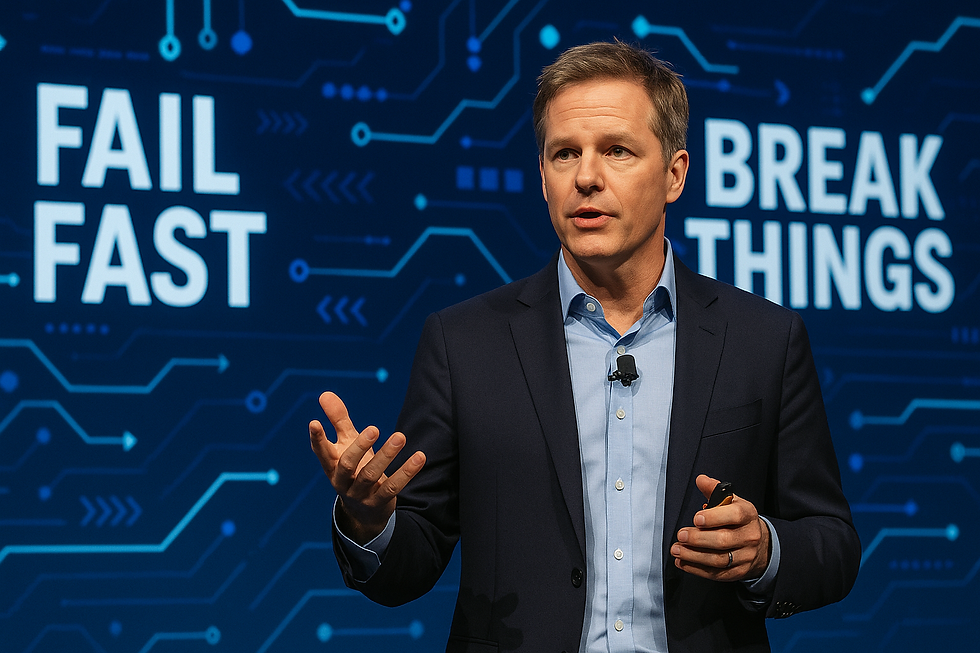Let's Talk About Schumpeter: A New Economic Paradigm for the 21st Century
- Paul Gordon

- Dec 17, 2024
- 3 min read

Over the past year, the world has watched with fascination as Argentina’s Javier Milei launched a bold economic experiment rooted in the Austrian school of thought—drawing inspiration from economists like Mises, Rothbard, and Hayek.
His policies, often labeled “far-right” or “extreme,” are, in reality, grounded in a disciplined vision of the economy as a culture of processes—not merely a mathematical equation to manipulate.
In the United States, a quieter yet equally profound economic evolution is underway. Through the 2024 presidential election cycle and a series of high-profile cabinet picks, a new economic framework is emerging—one that rejects both the rigid interventionism of John Maynard Keynes and the doctrinaire minimalism of the Austrian school. Instead, it draws its inspiration from one of their students: Joseph Schumpeter, the Austrian-born political economist whose ideas feel strikingly relevant in today’s era of disruption, reindustrialization, and technological change.
Why Schumpeter Matters Now
Joseph Schumpeter’s name is most often associated with the term “creative destruction”—a phrase that has become shorthand for innovation’s ability to dismantle old systems and give rise to new ones. But this oversimplifies the scope of Schumpeter’s brilliance.
In truth, Schumpeter understood capitalism as an ever-evolving system—dynamic, cyclical, and shaped by the entrepreneurial spirit that drives new combinations of resources and ideas.
In the context of the current moment, Schumpeter’s work provides a blueprint for understanding:
Technological Innovation as a Catalyst for Renewal.
Capitalism’s Evolutionary Nature—where destruction and creation are inseparable forces of progress.
The Role of Entrepreneurs and Policymakers in driving long-term economic growth, rather than managing short-term economic “equilibriums” as Keynes advocated.
The Shift Away from Keynesianism
For the past 50 years, Keynesian economics has dominated Western fiscal and monetary policy. Keynes viewed the economy as a problem to be solved through intervention—governments injecting capital during downturns, manipulating interest rates, and striving for a stable equilibrium.
But the 21st century has introduced challenges that Keynesian tools alone cannot resolve:
Stagnant Industrial Growth in developed economies.
Unsustainable Debt Levels that require long-term productivity gains, not short-term stimulus.
Technological Disruption that accelerates cycles of destruction and creation.
In this environment, Schumpeter’s vision offers something Keynesian policies cannot: a framework that embraces dynamic disequilibrium—the idea that progress requires disruption, innovation, and transformation.
The Schumpeterian Cabinet: A Paradigm Shift in Action
Donald Trump’s recent cabinet selections signal a shift toward policies that align with Schumpeter’s principles:
Scott Bessent (Treasury): A master of identifying imbalances and economic turning points. Bessent’s role will likely involve managing the dollar to balance growth with stability—a critical task in an age of global financial realignment.
Howard Lutnick, Paul Atkins, and David Sacks: Champions of digital assets and financial innovation, these figures reflect Schumpeter’s belief that new ideas and technologies drive systemic renewal.
Elon Musk & Vivek Ramaswamy (DOGE): Their role underscores the belief that efficiency and disruption—hallmarks of Schumpeterian progress—can transform government itself into a leaner, more productive entity.
What emerges is a vision of capitalism not as a static system to be managed, but as a dynamic force to be unleashed—one where government plays the role of enabler, clearing barriers to innovation while fostering a competitive, entrepreneurial environment.
The Entrepreneurial Economy and the Path Forward
Schumpeter saw entrepreneurs as the agents of change, driving progress through their ability to see opportunities where others see chaos. Today, the U.S. stands on the brink of a similar opportunity:
Reindustrialization: Rebuilding domestic production with cutting-edge technologies like AI, robotics, and digital finance.
Technological Adaptation: Bitcoin, stablecoins, and decentralized systems as tools for financial resilience and productivity gains.
Policy Innovation: Regulatory frameworks that encourage experimentation—allowing new combinations of resources to emerge, as Schumpeter envisioned.
This entrepreneurial economy is not without risks. Creative destruction is disruptive by nature, and its benefits are not always evenly distributed. But in a time of mounting debt, rising socioeconomic inequality, geopolitical uncertainty, and stagnant growth, embracing Schumpeterian principles may offer the most promising path forward.
Schumpeter in the 21st Century
Joseph Schumpeter’s ideas were far ahead of his time, but their moment may have finally arrived. The emerging economic policies in the United States reflect a recognition that stability alone cannot solve the challenges of the modern era.
Progress requires destruction and creation—dynamic forces that drive innovation, resilience, and growth.
In the months and years ahead, as the United States navigates this paradigm shift, Schumpeter’s vision will serve as a critical guide: a reminder that the path to renewal lies not in avoiding disruption, but in harnessing its potential.
Coming soon...
Stay tuned as we explore how this paradigm shift unfolds, examining the people, policies, and technologies that are shaping the future of the American economy.




Comments